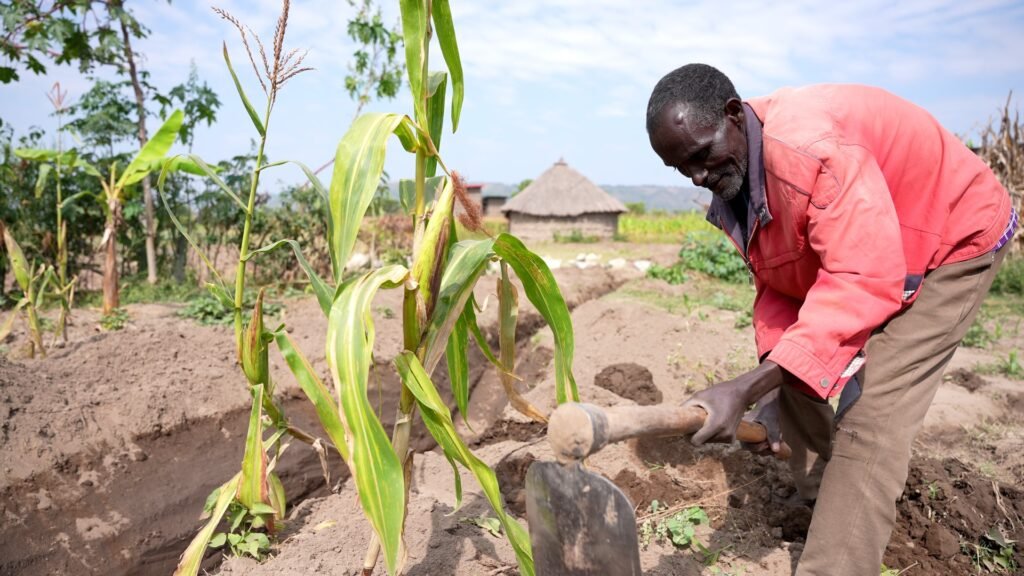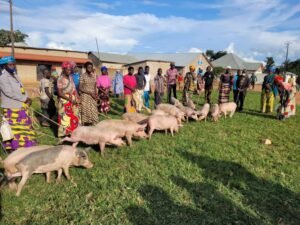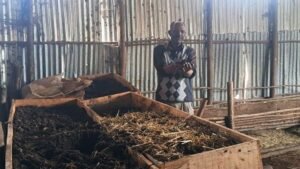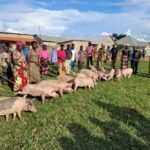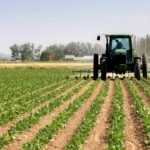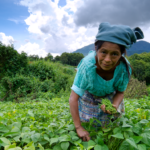By Zablon Oyugi, August 28, 2025 – Access to timely weather and climate services (WCS) is emerging as a powerful tool to strengthen farmers’ resilience and increase crop yields in Ethiopia, according to a new study published in Climate Risk Management by researchers from the International Growth Centre (IGC), International Livestock Research Institute (ILRI), the International Maize and Wheat Improvement Center (CIMMYT), and partners.
The study, which analyzed data from nearly 3,800 households across Ethiopia, found that access to weather and climate information boosted maize productivity by 27 percent and wheat by 17 percent—yields comparable to or even higher than those achieved with fertilizer and improved seeds.
These findings underscore the critical role of climate services in safeguarding food security in one of Africa’s most climate-vulnerable nations.
Limited Access Despite Big Gains
Despite the impressive benefits, only 18 percent of Ethiopian farmers surveyed had access to weather and climate services.
Of those, 31 percent received daily weather forecasts, 27 percent obtained rainfall onset and cessation dates, 20 percent accessed forecasts on the start of rains, 15 percent received ten-day forecasts, and 6 percent were given warnings of flood or drought risks. Additionally, 16 percent reported receiving combinations of these services.
Radio remains the dominant mode of dissemination, with 63 percent of farmers preferring it, followed by television (19 percent).
A smaller share relied on extension agents (8 percent), friends and neighbors (4 percent), and mobile phone text messages (2 percent). The low uptake of SMS services is attributed to literacy challenges in rural areas.
Farmers highlighted planting decisions, timing of fertilizer and pesticide use, and preparedness for extreme weather events as the main applications of climate information.
However, barriers persist: 18 percent cited poor dissemination channels, another 18 percent mentioned financial constraints, and 8 percent pointed to language barriers.
Ethiopia’s Gains in Context
The Ethiopian case aligns with a growing body of evidence across sub-Saharan Africa showing that climate services can transform agricultural outcomes.
In Burkina Faso, access to WCS significantly improved cowpea yields, while in Senegal, seasonal forecasts boosted millet, sorghum, and rice productivity.
Ghanaian farmers using forecasts and training saw higher yam and maize yields, and in Kenya, seasonal forecasts combined with training and advisories raised maize yields.
These results highlight that when weather and climate information is tailored, timely, and accessible, it can rival traditional agricultural technologies in enhancing productivity.
Building Climate Resilience
The study further revealed that households with access to WCS not only enjoyed higher crop yields but also had stronger asset bases. Their total household asset value was three times higher than that of households without access, suggesting that climate services may contribute to broader livelihood resilience.
The Ethiopian Meteorological Institute (EMI), the country’s national weather agency, has been at the forefront of producing localized climate information for agriculture. Ethiopia was the first country in sub-Saharan Africa to generate operational seasonal climate forecasts.
Its National Framework for Climate Services, launched in 2018, was designed to align with the UN Global Framework for Climate Services and ensure farmers benefit from accurate, localized climate information.
However, the study notes that weak “last-mile delivery” systems remain a challenge, limiting farmers’ ability to access, interpret, and use information effectively. Researchers recommend greater investment in training extension workers, expanding broadcast media coverage, and leveraging mobile technology to improve access.
Policy and Future Outlook
The findings come at a critical time as Ethiopia faces recurrent droughts, unpredictable rainfall, and rising climate risks that threaten food security and rural livelihoods. Integrating climate information into agricultural planning could help bridge yield gaps and reduce vulnerability.
“Access to weather and climate services can make as much difference to farmers as fertilizer or improved seeds,” the study concludes. “Scaling up these services could substantially improve Ethiopia’s agricultural productivity and resilience to climate shocks”.
As evidence from Ethiopia and across sub-Saharan Africa shows, climate-smart information is not just about forecasts—it is about equipping farmers with the tools to adapt, make better decisions, and secure their harvests against an uncertain climate future.

